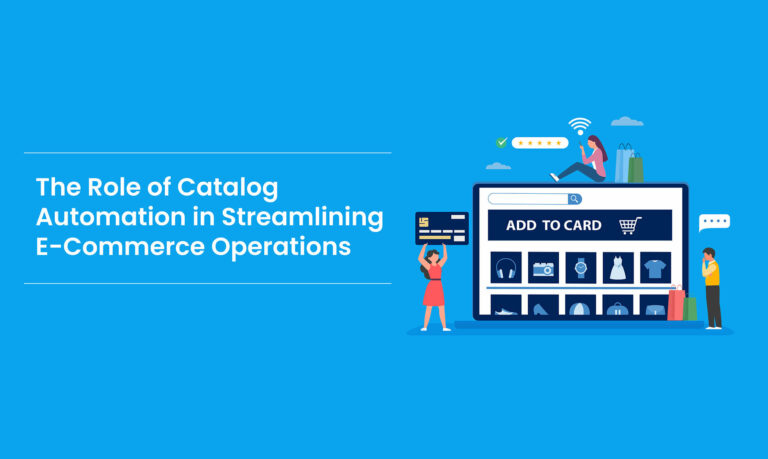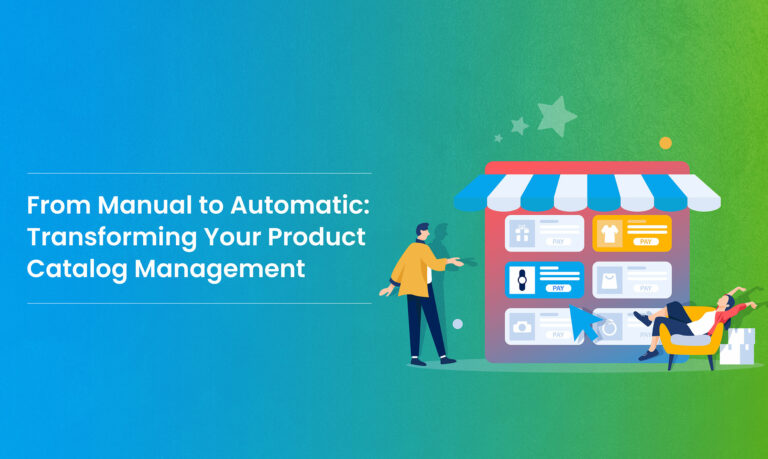Introduction
Data and AI are two emerging technologies that are dominating every facet of our lives. The old-school method of storing data on paper, microfilm, and other resources is now creating an immense need to convert the data in these materials into text that will aid data analysis. Data analysis can only happen if there is a way to read, extract, and analyze the data. This need has led to the emergence of software that can effectively convert images to text using various technologies. These vital technologies will pave the way for data extraction, which is critical for decision-making across industries.
Converting information from physical formats is not just a convenience; it’s a strategic necessity in the competitive field of data analytics. Rubick.ai is at the forefront of this technology, offering this vital step of converting images into text.
This article explores the practicalities of how image-to-text services simplify data extraction using Optical Character Recognition or OCR. Explore the mechanics behind this evolution and the tangible benefits it offers to businesses and decision-makers. From the historical background of data conversion to the efficient solutions available today, Navigate the landscape where image-to-text services stand as the key facilitator for unlocking insights hidden within non-digital formats.
Advantages Over Traditional Methods in Image-to-Text Technology
Image-to-text technologies offer distinct advantages over traditional methods. Let us look into how the two methods compare:
Manual Data Entry Challenges:
- A time-consuming process requiring substantial workforce resources.
- Prone to human errors and inaccuracies in data extraction.
OCR Technology for Accuracy Improvement:
- Image-to-text services utilize advanced algorithms for enhanced accuracy.
- Mitigates errors associated with manual data entry, ensuring precision.
Cost-Efficiency Through Automation:
- Automation reduces time and human resource costs significantly.
- Initial technology investment yields long-term financial benefits.
Scalability Advantage:
- Image-to-text services offer scalability to handle increasing data volumes with ease.
- Ensures efficiency even as business workload expands.
Versatility Across Industries:
- Applications extend across diverse industries, from finance (invoices) to healthcare (medical records).
- Image-to-text services provide a valuable tool for efficient data extraction tailored to specific industry needs.
Available OCR Software: A Comprehensive Overview
Let us now look at some of the top image-to-text conversion tools available today.
Rubick.ai
- AI platform for e-commerce with a state-of-the-art image-to-text tool.
- Rapidly transforms text-containing images into editable, searchable text.
- Accommodates diverse languages and formats.
- Users can upload images, preview extracted text, and download in various formats.
Tesseract OCR (Google)
- Open-source OCR engine by Google.
- Widely used for its high accuracy.
- Supports multiple languages.
Adobe Acrobat
- Well-known software for creating, viewing, and editing PDFs.
- Built-in OCR feature recognizes text in scanned images, converting them to editable text.
Cloud-based OCR Services
i) Google Cloud Vision OCR
- Cloud-based service by Google using machine learning.
- Text recognition and extraction from images.
ii) Amazon Textract (AWS)
- OCR service automatically extracts text, forms, and tables from scanned documents.
Mobile OCR Apps
i) ABBYY FineScanner
- Mobile app facilitating document scanning via smartphone camera.
- Converts scanned text into editable formats.
ii) Microsoft Office Lens
- Mobile app by Microsoft capturing and converting images into text.
- Seamless integration with Microsoft Office applications.
Online OCR Tools
- Web-based tools like Small Pdf and OnlineOCR.net allow users to upload images for conversion into editable text.
SDKs and Libraries
i) Pytesseract
- Python wrapper for Tesseract OCR.
- Facilitates seamless integration into Python applications.
ii) Google Cloud Vision API SDK
- Software development kits empowering developers.
- Facilitates integration of Google Cloud Vision OCR into applications.
Desktop OCR Software
i) ABBYY FineReader
- Desktop OCR software.
- Converts scanned documents, PDFs, and images into editable, searchable formats.
Custom Solutions
- Organizations may develop in-house image-to-text solutions.
- Tailored to specific needs, leveraging a mix of OCR technologies and machine learning algorithms.
How to Choose the Ideal Image-to-Text Tool
The field is continuously evolving with the introduction of new tools. Organizations should stay regularly updated on the latest advancements in image-to-text technologies. Factors influencing the choice of a solution include:
- Accuracy and precision.
- Language support is crucial for catering to diverse linguistic requirements.
- Ease of integration ensures seamless implementation into existing systems.
- Alignment with specific applications or business needs is essential for optimal functionality.
Real-Life Applications of Image-to-Text Technology
The following is a comprehensive list of the real-life applications of Image-to-text technology.
Forming Vast Databases:
- Collecting data from images, including product details, customer reviews, and competitor prices.
- Improving product catalogs, optimizing pricing strategies, and gaining market insights.
Boosting Productivity:
- Saving time and effort by converting images to text.
- Students scanning textbooks, professionals scanning business cards, and writers editing handwritten drafts.
Creating Data Indexes:
- Enhancing data accessibility and searchability by converting images to text.
- Researchers indexing historical documents, librarians cataloging book covers, and travelers translating signs and menus.
Easier Content Creation:
- Generating content such as captions, descriptions, and summaries from images.
- Bloggers creating blog posts, marketers developing social media content, and journalists writing news articles.
Data Automation:
- Integrating data with other platforms by converting images to text.
- Accountants importing scanned invoices to accounting software, lawyers uploading scanned contracts to legal databases, and teachers automatically grading assignments.
Improved Accessibility:
- Assisting users with visual impairments or reading difficulties by converting images to text.
- Blind users listening to scanned images as audio, dyslexic users customizing font and color, and low-vision users enlarging text.
Cost-Saving Properties:
- Reducing expenses by converting images to text.
- Businesses storing paper documents digitally, individuals reading books and magazines online, and organizations analyzing forms and surveys electronically.
The Rubick.ai Advantage
Rubick.ai, an AI powerhouse, brings forth a suite of AI-driven solutions, including cataloging, data sourcing, and image editing. The image-to-text tool transforms images with text into editable and searchable text. Users can unlock the ability to extract critical information, including product names, descriptions, prices, and ratings. The tool’s adaptability shines as it seamlessly handles diverse languages, fonts, and text formats, ensuring reliability across a spectrum of content.
Key Features of Rubick.ai
Advanced AI Algorithms:
- Rubick.ai’s image-to-text tool employs state-of-the-art AI algorithms.
- Ensures precise analysis and recognition of text within images.
Swift Processing:
- Rapid image processing capabilities, delivering accurate results within seconds.
- Accelerates the data extraction process for enhanced efficiency.
User-Friendly Interface:
- Intuitive interface for a seamless user experience.
- Users can effortlessly upload images, preview extracted text, and download in various formats.
Flexibility and Editability:
- Users enjoy the flexibility to edit text or correct errors before finalizing downloads.
- Enhances user control and customization over extracted information.
Versatile Applications:
- The image-to-text tool serves diverse purposes, including data sourcing, accessibility, and integration.
- Adaptable to a range of business needs, optimizing workflow efficiency.
The Future of Image-to-Text Technology
Image-to-Text technology is continuously advancing with the integration of groundbreaking technologies. As we peer into the horizon, several trends and possibilities emerge, reshaping the landscape of data extraction.
- Advancements in AI and Machine Learning
- Ongoing progress in AI and machine learning ensures improved accuracy and adaptability.
- Sophisticated algorithms, like Google’s Tesseract OCR and ABBYY FineReader, can decipher complex content, supporting over 200 languages and various image formats.
- Integration of Multimodal AI
- Multimodal AI integration enables interpretation beyond text to include visual elements like shapes and context.
- For instance, ChatGPT can describe, answer questions, and generate captions for images, providing richer insights.
- Real-time Processing and Edge Computing
- Future Image-to-text services promise real-time processing with enhanced speed.
- Edge computing capabilities, as seen in Remove.bg, reduce latency by processing closer to the data source.
- Expanded Language and Script Support
- Image-to-text technology continues to break language barriers, supporting a broader array of languages and scripts.
- Rubick.ai, for example, handles diverse languages, fonts, and text formats, ensuring versatility and reliability.
- Blockchain Integration for Security
- Security concerns are addressed through blockchain integration, ensuring immutable ledgers and enhanced encryption.
- Blockchain technology validates the original source, extracted text, and conversion timestamp, ensuring data integrity.
- Augmented Reality (AR) Applications
- Image-to-text converges with Augmented Reality for real-time contextual information overlay.
- AR applications could scan and translate signs or menus, transforming user interactions with the visual world.
Image-to-text technology is poised to become more intuitive, efficient, and seamlessly integrated into various facets of our digital lives. The synergy of emerging technologies will redefine the data extraction processes and unlock novel applications that go beyond conventional boundaries and will be out-of-the-box in its vision.
Conclusion
In conclusion, the adoption of Image-to-text services marks a paradigm shift in data extraction processes. The automation, speed, and precision offered by these services significantly simplify the extraction of valuable information from images. Embrace the transformative power of Image-to-text services and witness a streamlined, efficient, and error-free approach to data extraction in your business operations.
Elevate your processes with Rubick.ai, a leader in the Image-to-text service domain. Rubick.ai empowers businesses to unlock the full potential of their data, ensuring a competitive edge. Let Rubick.ai be your partner in achieving excellence.

